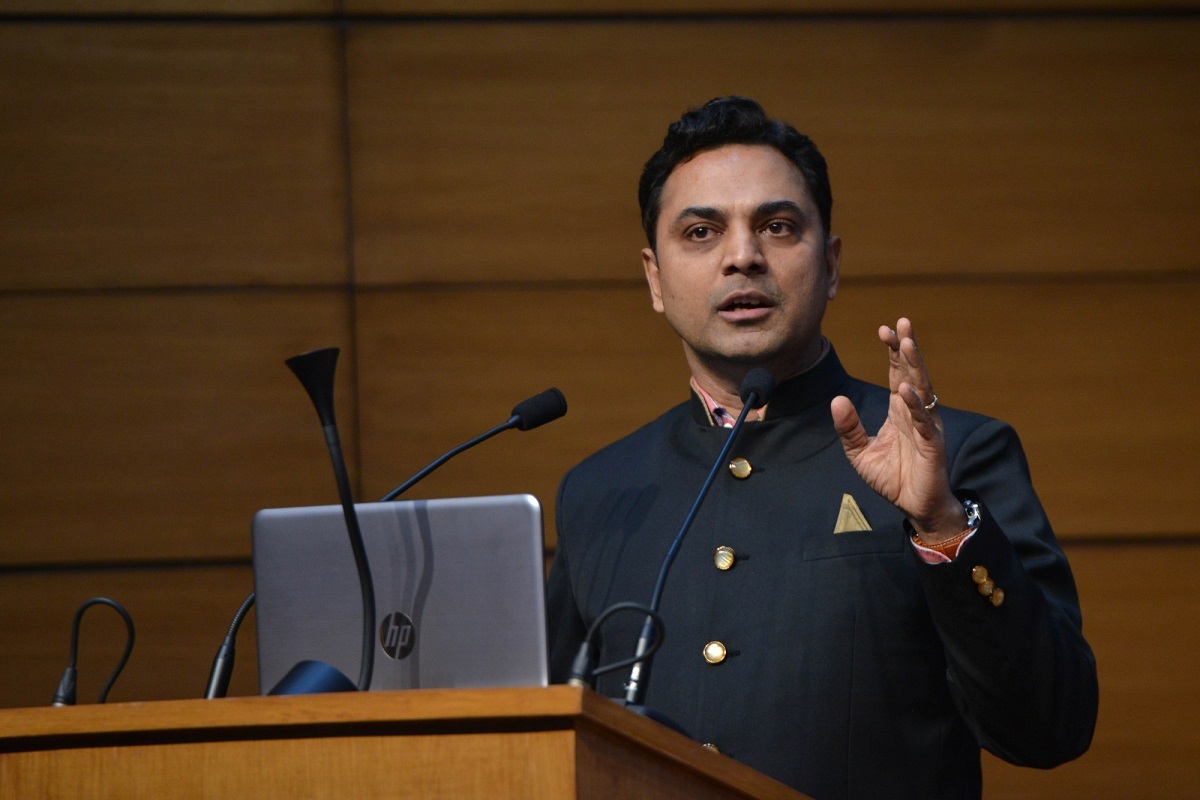
IMF Executive Director KV Subramanian predicts 7% growth for FY24, says India ‘charting own path’
NEW DELHI : In response to former RBI Governor Raghuram Rajan‘s comments on India’s GDP growth, Mr. KV Subramanian, Executive Director of the International Monetary Fund (IMF) and Former Chief Economic Advisor to the Government of India, expressed optimism.
He highlighted the robust growth of the Indian Economy, citing a 7.2 percent growth last year and a 7.7 percent growth in the first half of the current year. Subramanian forecasted a 7 percent growth for the ongoing financial year.
“The fact that the economy has grown at 7.2 percent last year and at 7.7 percent in the first half of this year is telling in itself. And if I look forward with a 7.7 percent growth in the first half of the year, even with a 6.3 percent average in the second half of the year, India will grow at 7 percent this particular financial year,” he said.
“I think it’s important to keep in mind that during the pandemic there were many commentators who were very negative. There were people and if you go and check back their media statements, you will find that there were people who said that there are millions of Indians that are going to die on the streets. There are people who actually said that the GDP will decline by over 20 percent for that financial year itself. Many people made such statements and I think none of that has come true,” he added while referring to cautious remarks during the COVID-19 pandemic.
“So in general, I think because of the sui generis policy that India implemented, India had the self-confidence and the courage of conviction to chart its own path rather than copy-pasting what was done, for instance, during the global financial crisis, where we copy-pasted what the advanced economies did…” he added.
GST revenue indicates a positive trend
Mr. Subramanian also commented on the GST revenue collected in November 2023, stating that the collection trend suggests a potential touch of ₹2 lakh crore per month in 1.5-2 years. He attributed the success of GST collection to effective policy implementation, reflecting India’s commitment to sound fiscal management.
“I think, going by the signs so far, in about 1.5-2 years, we can expect to touch two lakh crores rupees in a month. I think the GST collection doing well is part of the overall phenomenon of good policy that has been implemented…So overall, I think the good performance on the GST side is evidence of good policy on taxation…” he said.
Satisfaction with India’s GDP growth
Expressing contentment with India’s GDP trajectory, Mr. Subramanian noted a 7.6 percent growth in the second quarter, following previous growth rates of 7.2 percent in FY23 and 7.8 percent in the first quarter of the ongoing fiscal year. He also hailed the 7.7 percent average growth in the first half as exceptional amid challenging global economic conditions, praising India’s economic performance as remarkable considering the international headwinds.
Mr. Subramanian commended India’s economic resilience and dynamism, highlighting substantial growth despite the complexities of the global economy. He emphasised that India’s ability to chart its own path, contrasting it with the approach taken during the global financial crisis, where India implemented unique policies rather than emulating advanced economies.
What did Rajan say?
Former Reserve Bank of India Governor Mr. Raghuram Rajan last month said that India’s economy is showing signs of steady growth but needs to expand at a pace of over 8 percent to create enough jobs for the world’s most populous nation.
“We should be going at 8-8.5 percent given the needs of the population and the need for jobs. Economic growth at 6-6.5 percent is strong compared with other countries, but relative to our need for jobs I think it’s still somewhat slow because we have a lot of young people who need to be employed,” he noted.
Mr. Rajan said India also needs to train its workforce to compete with other efficient manufacturing nations, including China and Vietnam. “India is trying to move up the value chain, and you’re seeing some signs of that happening. But there is a long distance to go, to actually manufacturing full cell phones in India”, he added, referring to the manufacture of iPhones in the country.
